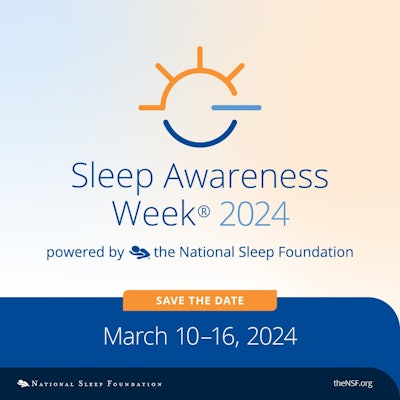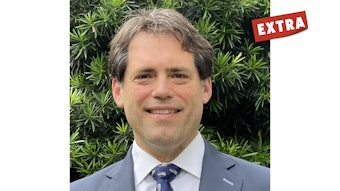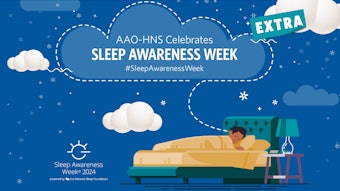The Impact of Functional Nasal Surgery on Sleep-Disordered Breathing
Functional nasal surgery provides an operative option to reduce clinical symptoms in patients with sleep-disordered breathing and nasal obstruction.
Chris Valentini, MD, and Colin Huntley, MD, on behalf of the Sleep Disorders Committee

Understanding the impact nasal surgery has on snoring, continuous positive airway pressure (CPAP) adherence and pressures, subjective sleep quality, quality of life, and apnea-hypopnea index (AHI) can help to guide decision making when treating patients with OSA. Given the expected rise in prevalence of OSA along with the multitude of unfavorable health outcomes associated with untreated disease, it is imperative to better comprehend the role of nasal surgery in treatment.
Continuous positive airway pressure has proven its efficacy for treating OSA, but adherence to therapy remains a considerable issue. It is estimated that between 46% and 83% of patients with OSA are nonadherent to treatment when adherence is defined using a commonly accepted threshold of greater than four hours of use each night.1
A 2015 systematic review published in Sleep showed isolated nasal surgery in patients with OSA could significantly improve both nightly adherence and conversion of non-PAP users to PAP-tolerant users.2 Improvement in adherence after surgery appears to owe to decreases in CPAP pressure settings and a perceived increase in nasal airflow.3 Furthermore, Kempfle et al. demonstrated that inferior turbinate reduction could be more cost-effective than medical management of nasal obstruction in the short-term and septoplasty could be more cost-effective than medical management in the long-term.4 Clinicians treating patients with OSA, nasal obstruction, and poor CPAP adherence should consider evaluation for nasal obstruction and appropriate nasal surgery as a potential option to optimize adherence.
Snoring, decreased quality of life, and excessive daytime sleepiness are common in patients with OSA. Thirty-eight percent to 80% of patients with OSA report snoring and 32% to 40% report excessive daytime sleepiness (ESS ≥ 11).5 Improvements to sleep-related and general quality of life with surgical correction of nasal obstruction have been demonstrated.6,7 Yamasaki et al showed significant long-term (two year) improvement in snoring-related quality of life for patients with OSA and snoring who underwent functional nasal surgery.8 Although nasal surgery can lead to improvements in snoring, daytime sleepiness, and important disease-specific and general quality of life metrics, the impact of nasal surgery on AHI is less clear.
Over the past two decades, numerous studies have looked at the impact of various types of functional nasal surgery on AHI. Two meta-analyses that included 23 studies did not show any significant improvement in AHI. The most recent meta-analysis to evaluate this issue, published in 2017, included 17 studies and showed that AHI improved by 4.15 events per hour.7,9,10 Further research with larger sample sizes, longer follow up, standardized methods of post-operative evaluation, and assessment of different sources of nasal obstruction and their correction will help to clarify the impact of nasal surgery on OSA disease burden. Currently, nasal surgery appears to have a limited impact on AHI, especially when compared with procedures that address other levels of obstruction in the upper airway.
Functional nasal surgery is a valuable tool for surgeons when treating patients with SDB and coexisting nasal obstruction. By decreasing a patient’s nasal airflow resistance, nasal surgery improves adherence to positive airway pressure, subjective sleep quality, and other sleep-related and general quality of life measurements. The role of nasal surgery in improving AHI still needs to be fully elucidated.
Given the expected increase in disease prevalence and that almost half of patients with SBD have concomitant nasal obstruction, there will be an increasing need for effective treatments and for future study defining the role of nasal surgery in OSA management.8
References
- Weaver TE, Grunstein RR. Adherence to continuous positive airway pressure therapy: the challenge to effective treatment. Proceedings of the American Thoracic Society. 2008. DOI: 10.1513/pats.200708-119MG
- Camacho M, Riaz M, Capasso R, et al. The Effect of Nasal Surgery on Continuous Positive Airway Pressure Device Use and Therapeutic Treatment Pressures: A Systematic Review and Meta-Analysis. Sleep. 2015. DOI:10.5665/sleep.4414
- Poirier J, George C, Rotenberg B. The effect of nasal surgery on nasal continuous positive airway pressure compliance. The Laryngoscope. 2013. DOI: 10.1002/lary.24131
- Kempfle JS, BuSaba NY, Dobrowski JM, Westover MB, Bianchi MT. A cost-effectiveness analysis of nasal surgery to increase continuous positive airway pressure adherence in sleep apnea patients with nasal obstruction. The Laryngoscope. 2016. DOI: 10.1002/lary.26257
- Chang JL, Goldberg AN, Alt JA, et al. International consensus statement on obstructive sleep apnea. International Forum of Allergy & Rhinology. 2022. doi: 10.1002/alr.23079
- Georgalas C. The role of the nose in snoring and obstructive sleep apnoea: an update. European archives of oto-rhino-laryngology. 2011. DOI: 10.1007/s00405-010-1469-7
- Li HY, Lin Y, Chen NH, Lee LA, Fang TJ, Wang PC. Improvement in Quality of Life After Nasal Surgery Alone for Patients with Obstructive Sleep Apnea and Nasal Obstruction. Archives of Otolaryngology–Head & Neck Surgery. 2008. DOI: 10.1001/archotol.134.4.429
- Yamasaki A, Levesque PA, Lindsay RW. Improvement in Snoring-Related Quality-of-Life Outcomes After Functional Nasal Surgery. Facial Plastic Surgery & Aesthetic Medicine. 2020. DOI: 10.1089/fpsam.2019.29002.lin
- Ishii L, Roxbury C, Godoy A, Ishman S, Ishii M. Does nasal surgery improve OSA in patients with nasal obstruction and OSA? A meta-analysis. Otolaryngology Head Neck Surg. 2015. DOI: 10.1177/0194599815594374
- Wu J, Zhao G, Li Y, et al. Apnea–hypopnea index decreased significantly after nasal surgery for obstructive sleep apnea. Medicine (Baltimore). 2017. DOI i: 10.1097/md.0000000000006008





















